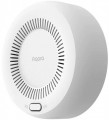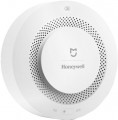Power source
The type of power used by the sensor.
Nowadays, you can find models that operate from
230 V household networks, from an external power supply
of 12 V(less often
24 V), from a
microUSB or
USB type C connector, as well as from autonomous sources -
batteries or
accumulators. Here is a detailed description of each option:
— 12 V. Standard operating voltage for most modern alarm systems. This type of power is found in wired sensors other than light sensors; the energy comes through the same wire that is used to transmit signals to the control panel.
- 24 V. Another type of power used in alarm systems with wired sensors. However, for a number of reasons it is much less common than 230 V.
— 230 V. Option used primarily in light sensors. Such devices are designed to switch the 230 V voltage supplied to the lamps - it is quite logical to power the sensors themselves from the same 230 V. Occasionally, there are other types of sensors with a similar connection, sometimes of a rather original design - for example, gas sensors that are plugged into an outlet when installed, or wireless motion detectors that are mounted in a lighting socket.
- Batteries. Powered by replaceable standard size batter
...ies. Such batteries can be either disposable or rechargeable, but in sensors the first option is most often used (and the term “battery” in this case usually refers to a slightly different type of power source - see below). This type of power supply is found mainly in wireless models, but can also be provided in wired sensors to ensure the operation of certain functions - for example, an alarm signal when communication with the control panel is lost. Formally, using batteries requires additional costs - batteries are not always included in the kit, unlike batteries. However, in practice, these costs are quite insignificant - especially since the energy consumption of most sensors is so low that the operating time on one set of batteries is often calculated in years. And you can change such a power source in a matter of seconds (while the battery needs time to charge). In light of this, batteries are the most popular in modern self-powered sensors.
- Battery. Powered by a battery that is not a standard size and does not allow for quick replacement (often not removable at all). This is another option found in wireless models (and some wired sensors with "standalone" functionality), along with the batteries described above. The advantages of the battery are that it is initially included in the package, and when the charge is depleted, you do not need to buy a new battery - you just need to charge the existing one. On the other hand, charging requires a power source and a certain amount of time, during which the sensor will most likely be inoperative. And although the operating time on a charge, as in the case of batteries, is often calculated in years, batteries are still used in modern sensors much less often.
- microUSB. The microUSB connector provides power to security sensors with a constant voltage of 5 V and low current values.
— USB type C. Power supply via USB type C connector with low constant voltage and current.
External power supply to security sensors with microUSB and USB type C connectors can be established from a standard smartphone charging unit or any other suitable adapter. Often this power supply is combined with autonomous power supply - from replaceable batteries of a standard size (see paragraph “Power from batteries”).Operating temperature
Ambient temperature range in which the sensor is guaranteed to remain operational.
All modern sensors are able to transfer the temperatures typical for residential and office premises without consequences. Therefore, it makes sense to pay attention to this parameter mainly in those cases when the sensor is planned to be used in more unfavorable conditions — for example, on the street, in an unheated room, in a “hot” industrial workshop, etc. At the same time, we emphasize that even for the most "Heat-resistant" models are undesirable exposure to direct sunlight — they can heat the case to temperatures that are much higher than permissible.
Maximum humidity
The highest relative air humidity at which the sensor can be used.
Many models can easily tolerate short-term (up to several hours) stay in a more humid atmosphere; however, for a complete guarantee, it is still better not to exceed the permissible humidity. As for specific numbers, in residential/office spaces (and similar environments) the relative humidity rarely exceeds 70%. But for outdoor use and rooms with high humidity (swimming pools, laundries, etc.), it is advisable to use sensors designed for a humidity of at least 90%.

